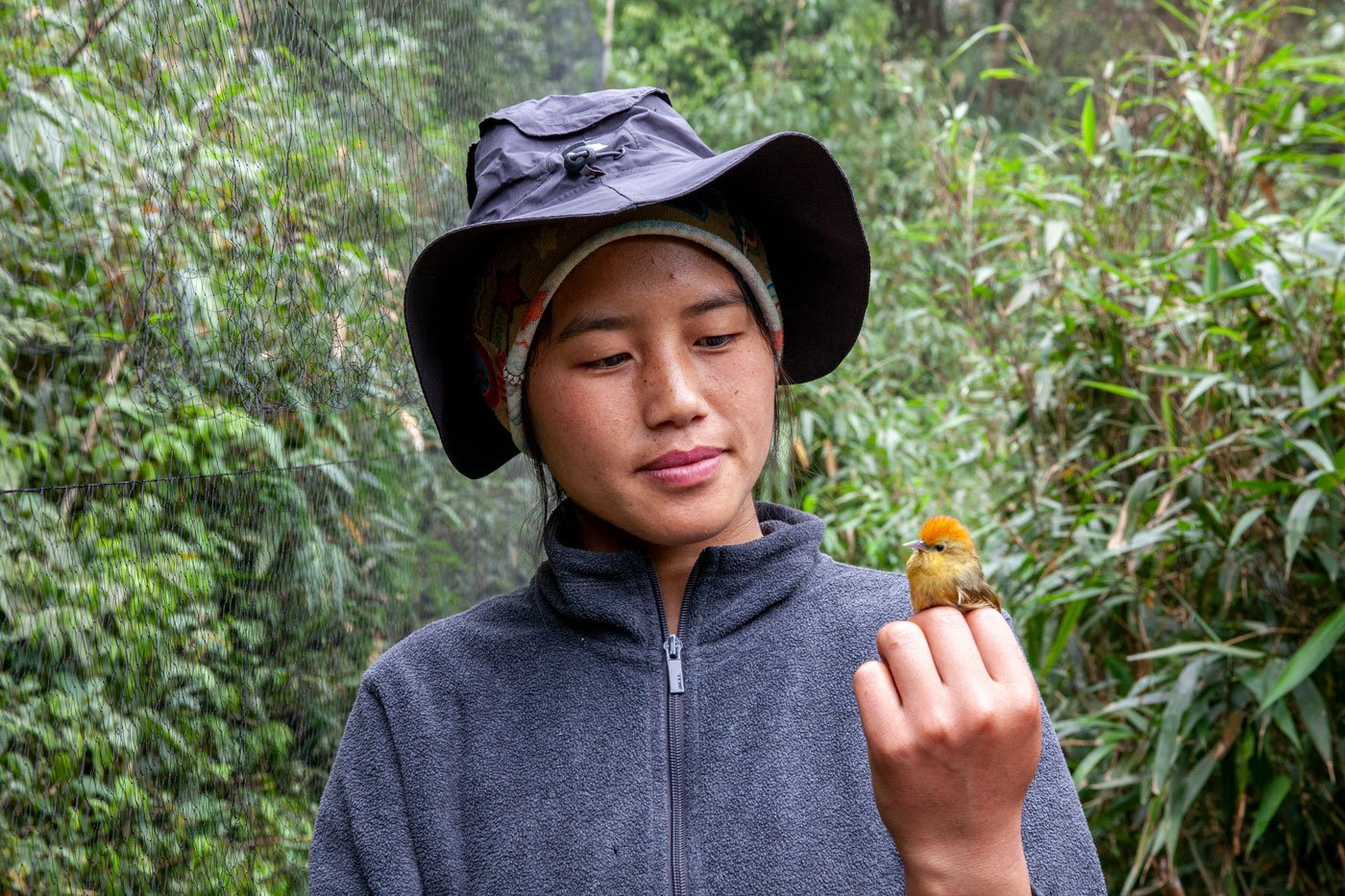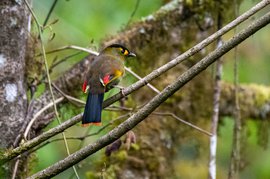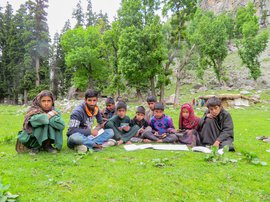"I just heard the call of an Oriental Shama.”
Micah Rai is excited. He describes its call as a melodious series of chirps.
But his excitement is tinged with worry about the tiny black, white and yellow winged creature. “It's usually found below [900 metres], but recently, I've been hearing it up here [2,000 metres]," says the 30-year-old field staffer who has been observing birds for the last decade at the Eaglenest Wildlife Sanctuary in Arunachal Pradesh.
A local, Micah is part of a team of scientists, researchers and field staff who have been studying avian species in the tropical montane (mountain) forests of Arunachal Pradesh's West Kameng district for the last 10 years.
Holding a striking dark blue and black bird with white lines on its tail, Dr. Umesh Srinivasan says, "this is the White-tailed Robin. Its upper limit used to be 1,800 metres, but over the last three to four years, it has been found at 2,000 metres."
An ornithologist, Srinivasan is a Professor at the Indian Institute of Science (IISc) in Bangalore and heads the team working in Arunachal Pradesh. "Over the last 12 years, bird species in the eastern Himalayas have been shifting their ranges," adds Srinivasan.
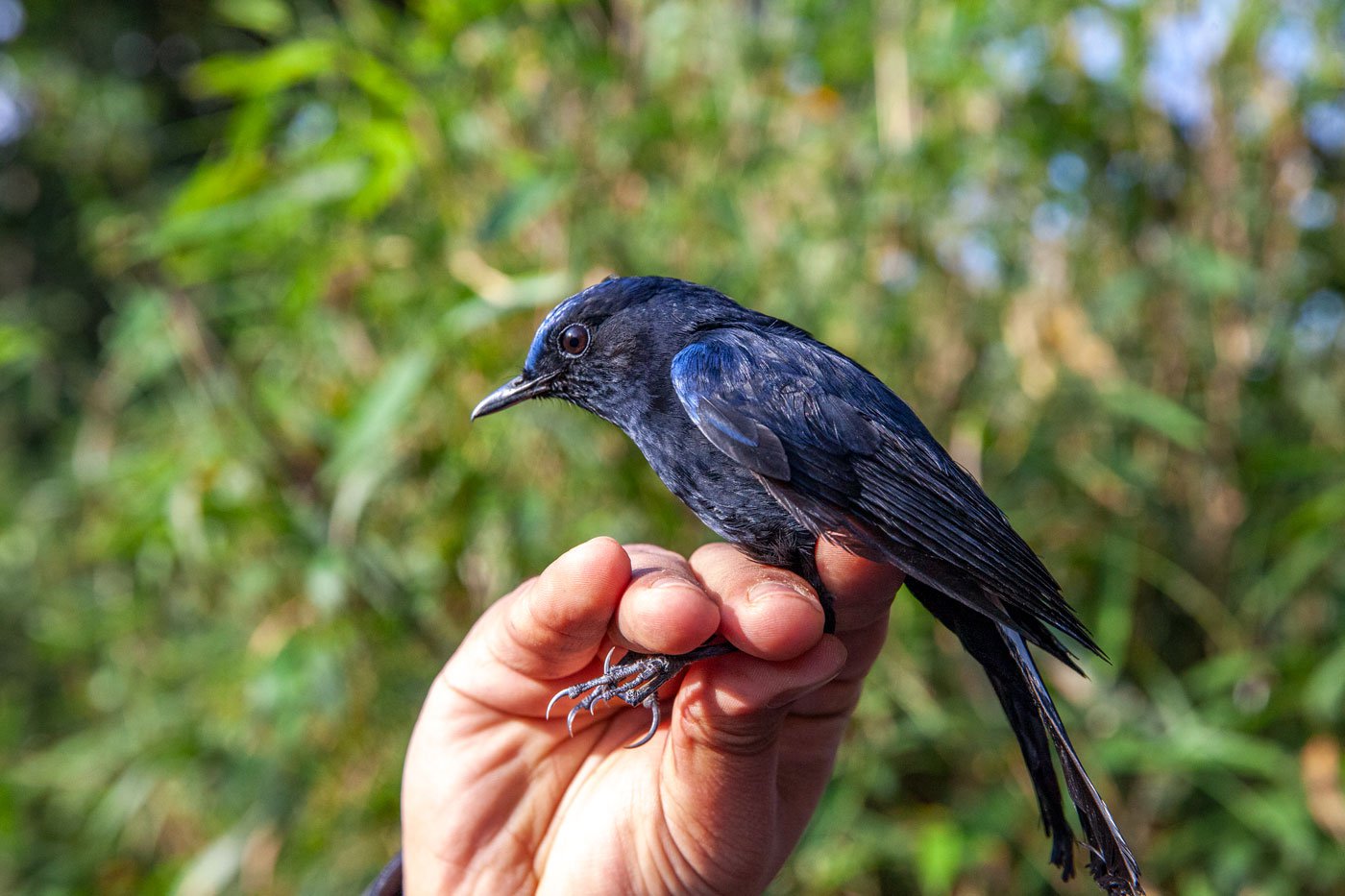
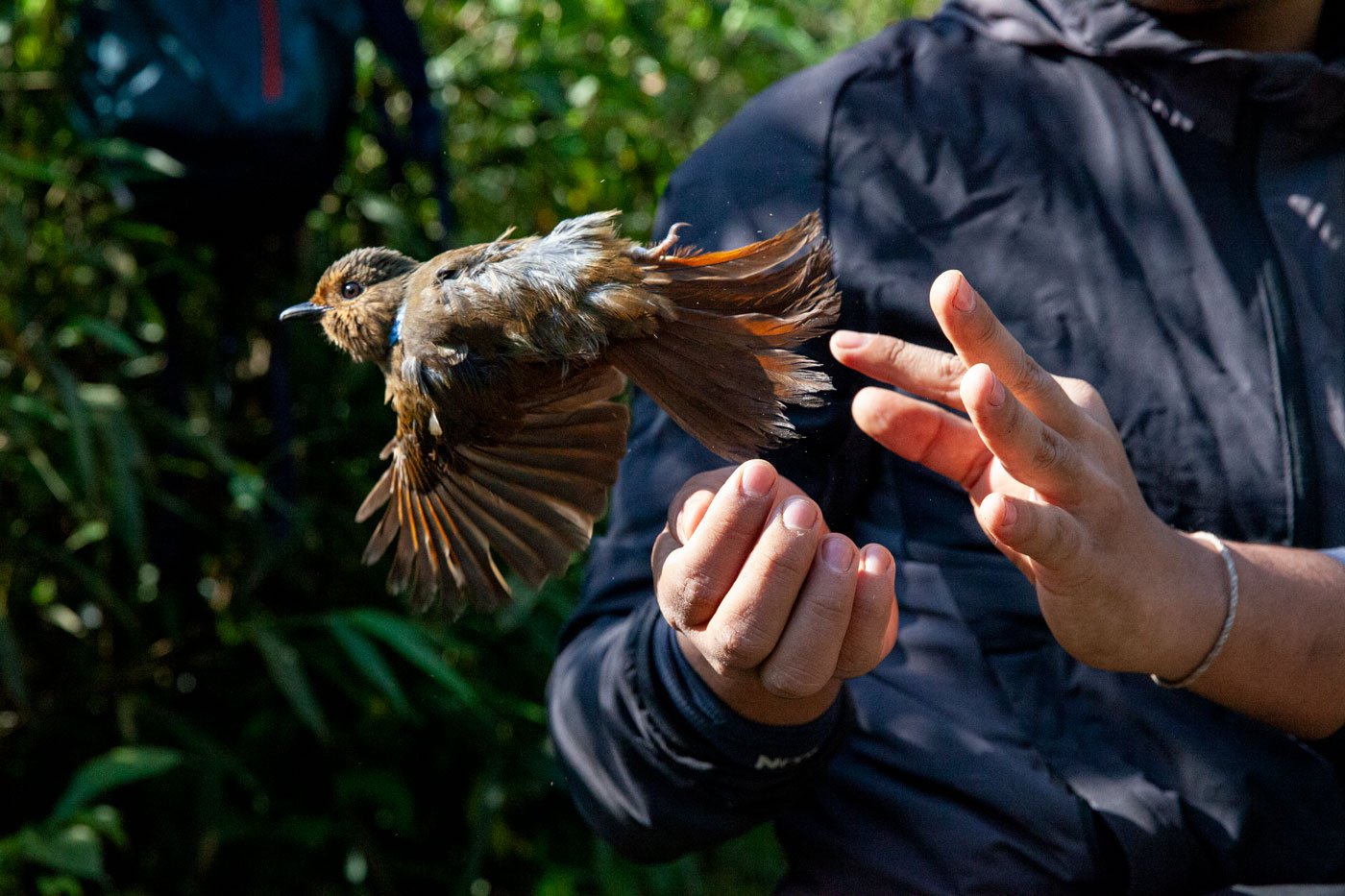
Left: The White-tailed Robin’s upper limit used to be 1,800 metres, but over the last three to four years, it has been found at 2,000 metres. Right: A Large Niltava being released by a team member after it has been ringed and vital data has been recorded
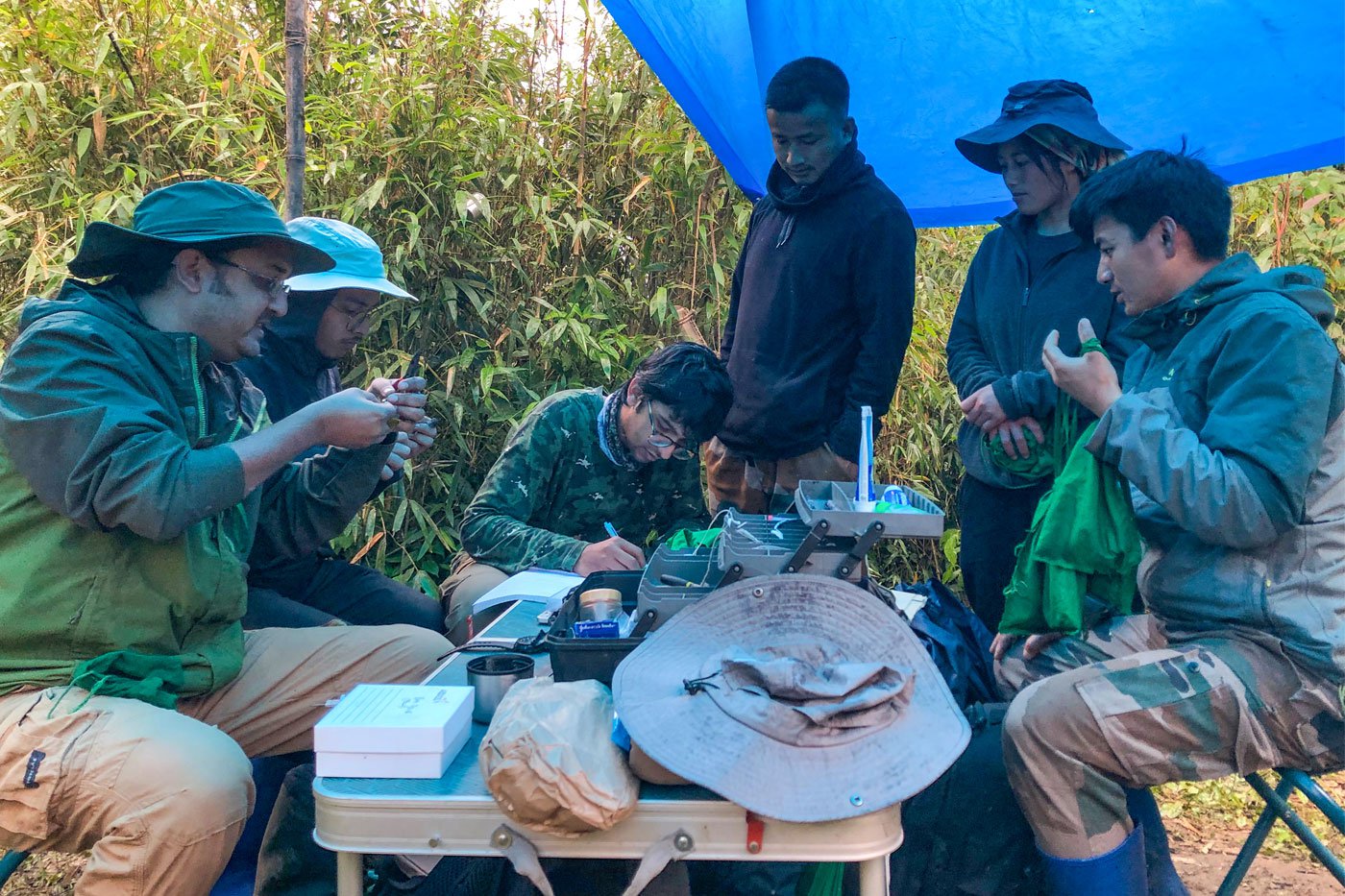
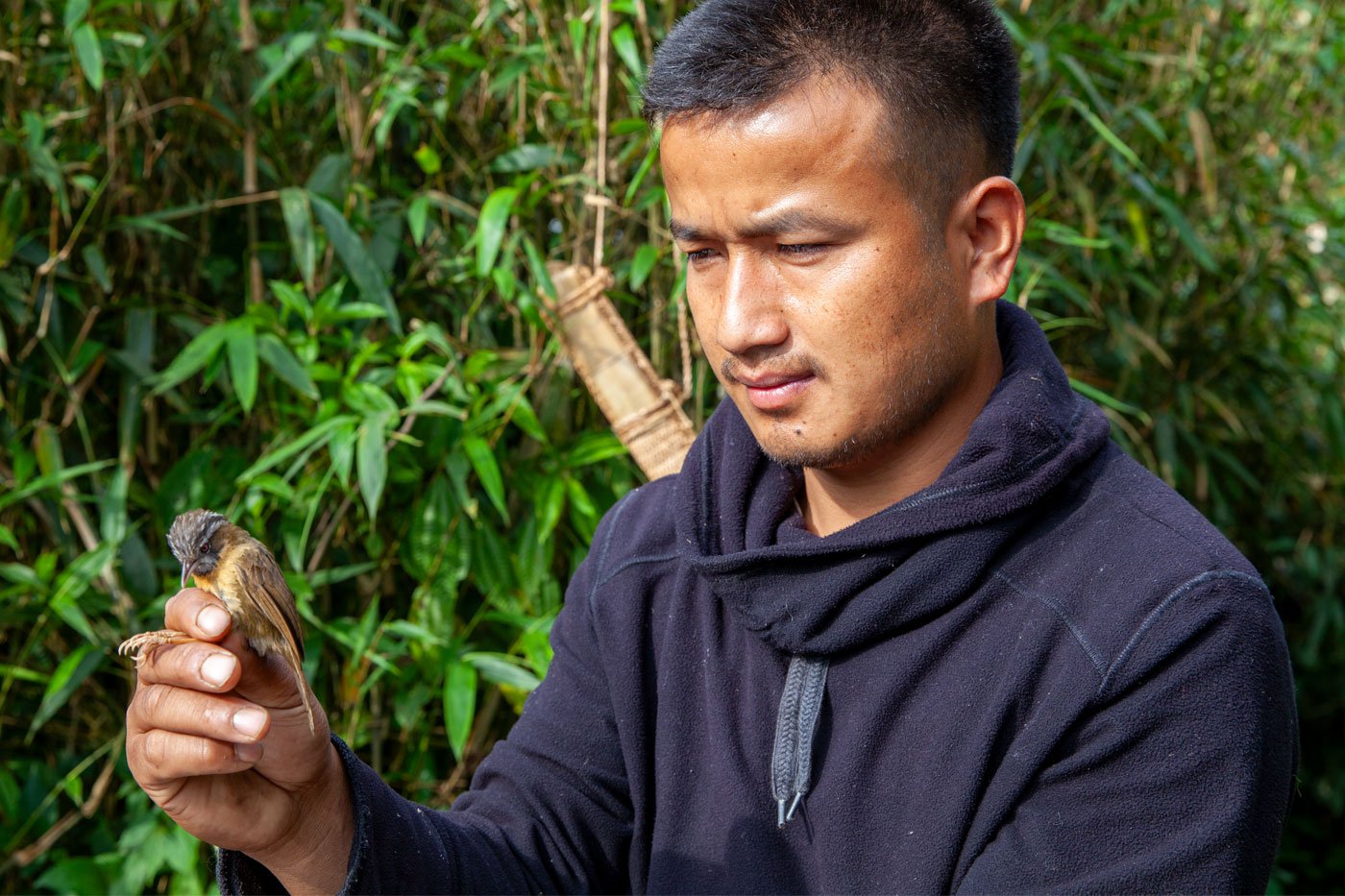
Left: The team is trying to understand how habitat degradation and rising temperatures alter the behaviour of birds and their survival rates. Right: Micah Rai holding a Grey-throated Babbler in what is called a 'photographer’s grip'
The presence of locals in the team has galvanised communities around who are worried about the change in temperatures and are looking at ways to mitigate the changes.
The team in West Kameng has six people – both locals and scientists who are trying to understand how habitat degradation and rising temperatures alter the behaviour of birds, forcing them to shift their ranges to higher elevations. Other low-elevation birds that are moving to higher altitudes are the Common Green-Magpie, Long-tailed Broadbill and Sultan Tit. This will also affect their survival rates.
"This is not migration," warns the ornithologist. “It's a response to rising temperatures that are forcing these birds to move upwards.” It's not just the feathered creatures feeling the heat in these cloud forests. "It's become much hotter in the hills over the last three-four years," says Aiti Thapa.
The 20-year-old, one of the newest additions to this team, is from nearby Ramalingam, a village in Singchung
tehsil
of West Kameng District. Her family grows tomatoes, cabbage and peas in Ramalingam. "It's becoming harder to grow these crops now because rain patterns, too, have become unpredictable. Not like how they used to be," she says.
The yearly mean temperature in the Himalayas rose by 1.5 degrees Celsius, says this paper, Widespread Climate Change in the Himalayas and Associated Changes in Local Ecosystems . "The rate of warming in the Himalayas is greater than the global average, confirming that the Himalayas are among the regions most vulnerable to climate change." These mountains are also home to 85 per cent of the world's terrestrial biodiversity, so conservation work here is critical.
Birds, being a relatively mobile group, can serve as an indicator of how climate change will affect other tropical montane biodiversity
"The impact of humanity on the world at large is magnified on Himalayan biodiversity," says Umesh, whose outdoor laboratory is at a campsite in Bongpu Blangsa within the national park, Eaglenest Wildlife Sanctuary that covers 218 square kilometres in Arunachal Pradesh.
The elevation of this sanctuary ranges between 500 mts to 3,250 mts. It's one of the only places on the planet with elephants at this height. Other animals seen here are clouded leopards, marbled cats, Asian golden cats and leopard cats. The endangered capped langur, red panda, Asiatic black bear and the vulnerable Arunachal macaque and gaur also call these forests home.
Aiti and Dema Tamang, in their early twenties, are the first women from their village Ramalingam, and in fact from the state, to document and study birds. Elders were hesitant when the girls first got the job. "Why do you want to take them to the jungles? These are not jobs for girls," they would remark.
“I told them the world doesn't work like that anymore," said Micah, also from Ramalingam village and with experience in documenting birds not just here but in Himachal Pradesh and the forests of Uttarakhand. "Girls and boys can do the same work."
Field staff like Aiti earn Rs. 18,000 a month and are able to support their families, most of whom are tenant farmers.
Despite their demanding research work, Aiti says giggling, "learning the English names of birds was the hardest part."
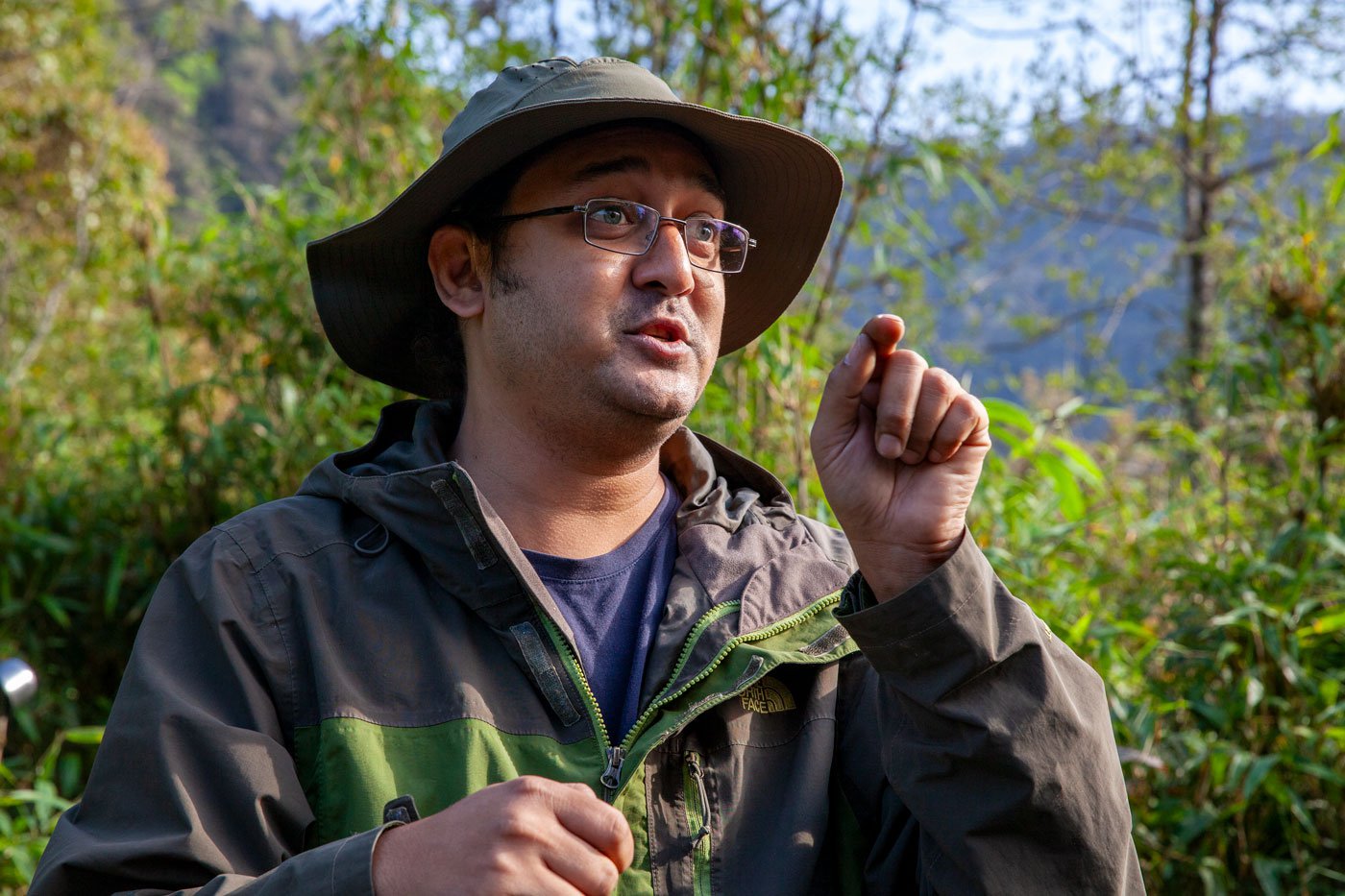
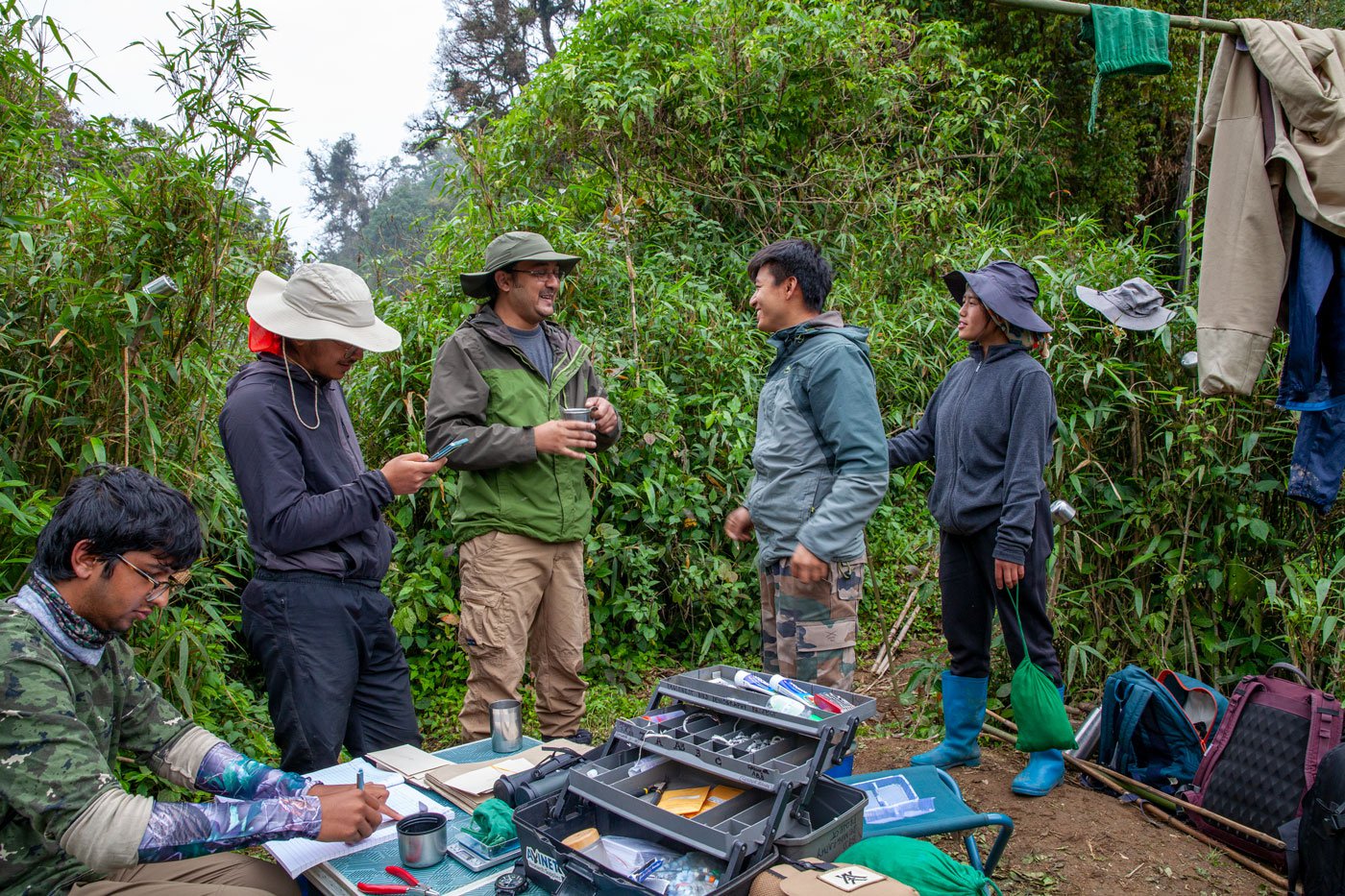
Left: Dr. Umesh Srinivasan is a Professor at the Indian Institute of Science (IISc) in Bangalore and heads the team working in Arunachal Pradesh Right: Left to Right: The team members, Rahul Gejje, Kaling Dangen, Umesh Srinivasan, Dambar Pradhan and Aiti Thapa at work
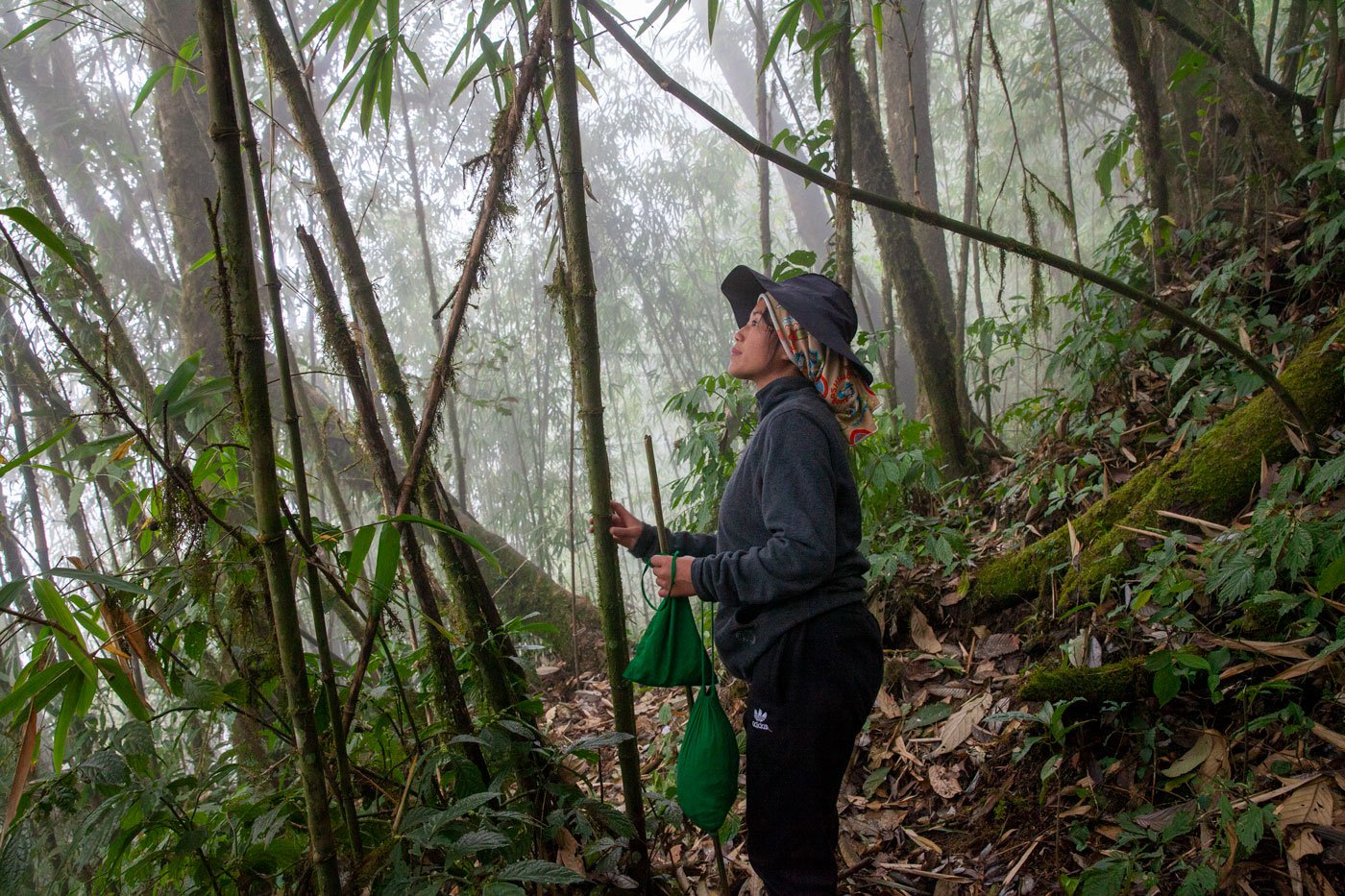
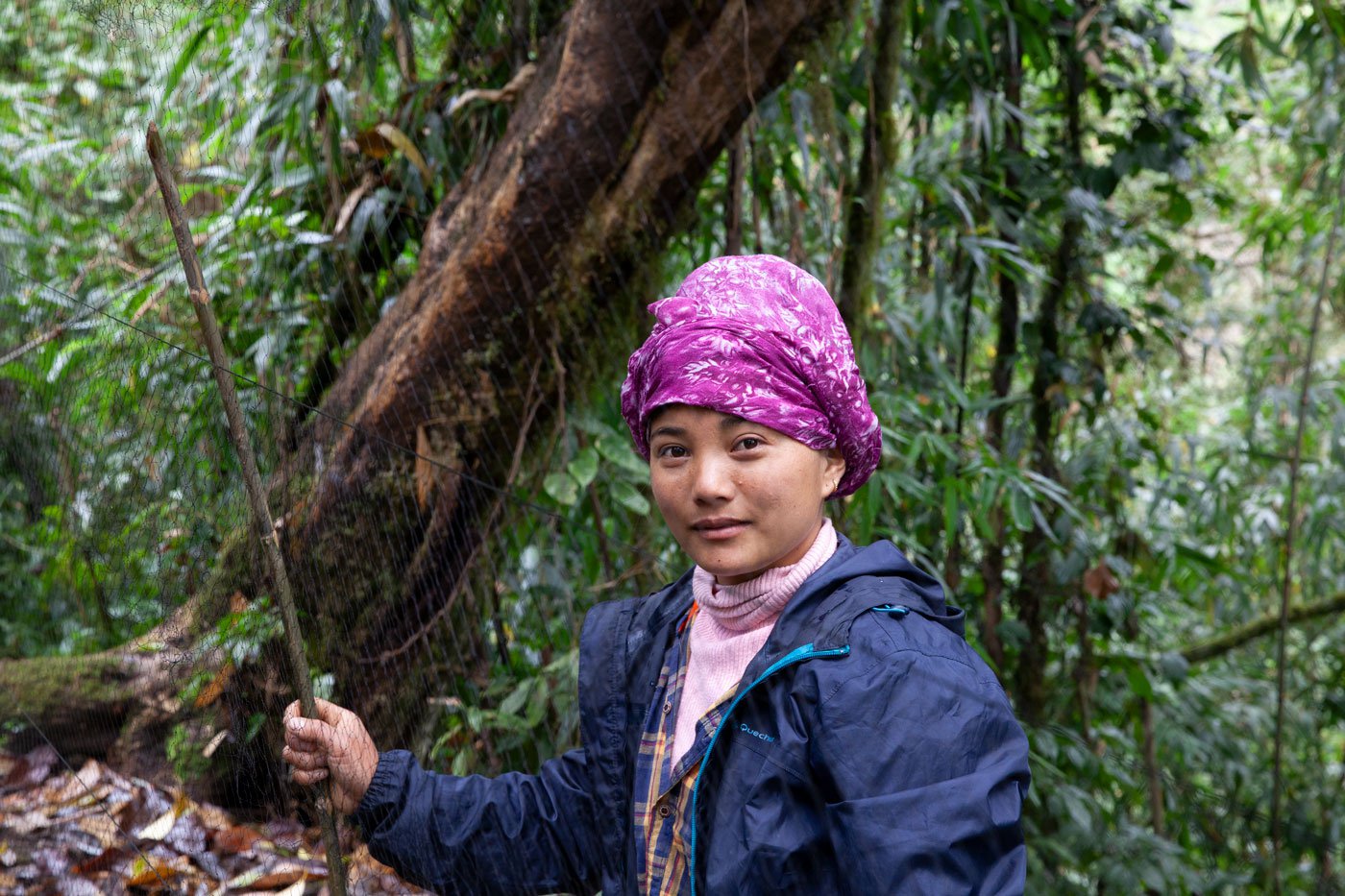
Aiti Thapa (left) and Dema Tamang (right), in their early twenties, are the first women from their village Ramalingam, and in fact from Arunachal Pradesh, to document and study birds via mist-netting
*****
In the 19th century, miners used canary birds as exceptional risk predictors when working in coal mines. These little birds are particularly sensitive to carbon monoxide and could prevent mining accidents – they died if exposed to it. ‘A canary in the coalmine’ became a popular phrase to describe early signs of potential danger.
Birds, being a relatively mobile group, can serve as an indicator of how climate change will affect other tropical montane biodiversity. Hence the Bongpu team’s work is critical.
Eaglenest is home to 600 species of birds. "Here, you can find hundreds of tiny iridescent birds that weigh less than 10 grams or a teaspoon of sugar," says Umesh. Besides that, some of the rarest feathered creatures call these cloud forests – forest in the clouds – their home. The scarlet-bellied Ward's trogon, the large pheasant-like Blyth's Tragopan, the silky blue-grey Beautiful Nuthatch and perhaps the most famous of them all, the elusive Bugun Liocichla nest here.
The birds found in this wildlife sanctuary draw ornithophiles from across the world, despite the challenging living conditions, harsh weather and rugged terrain.
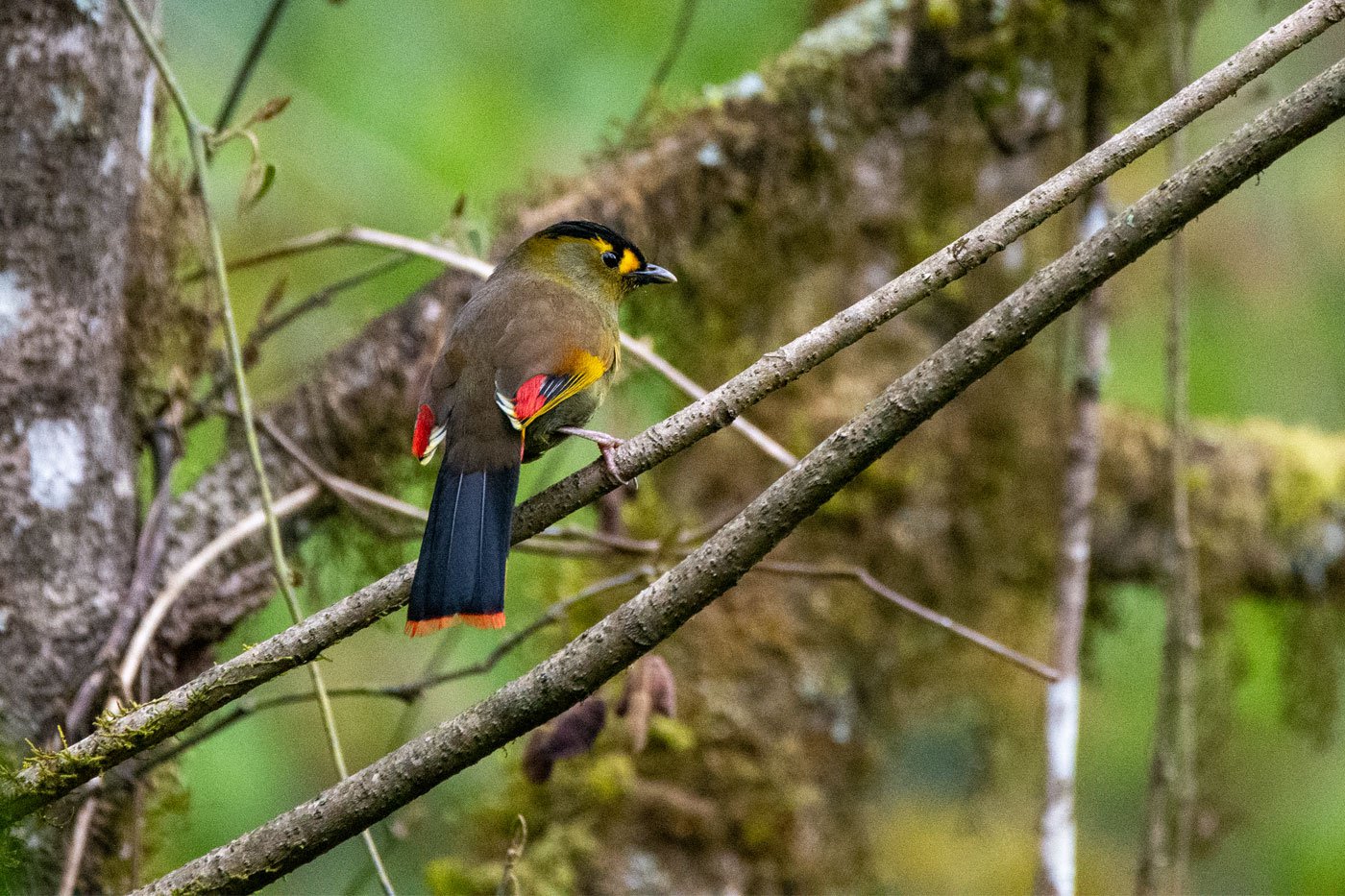
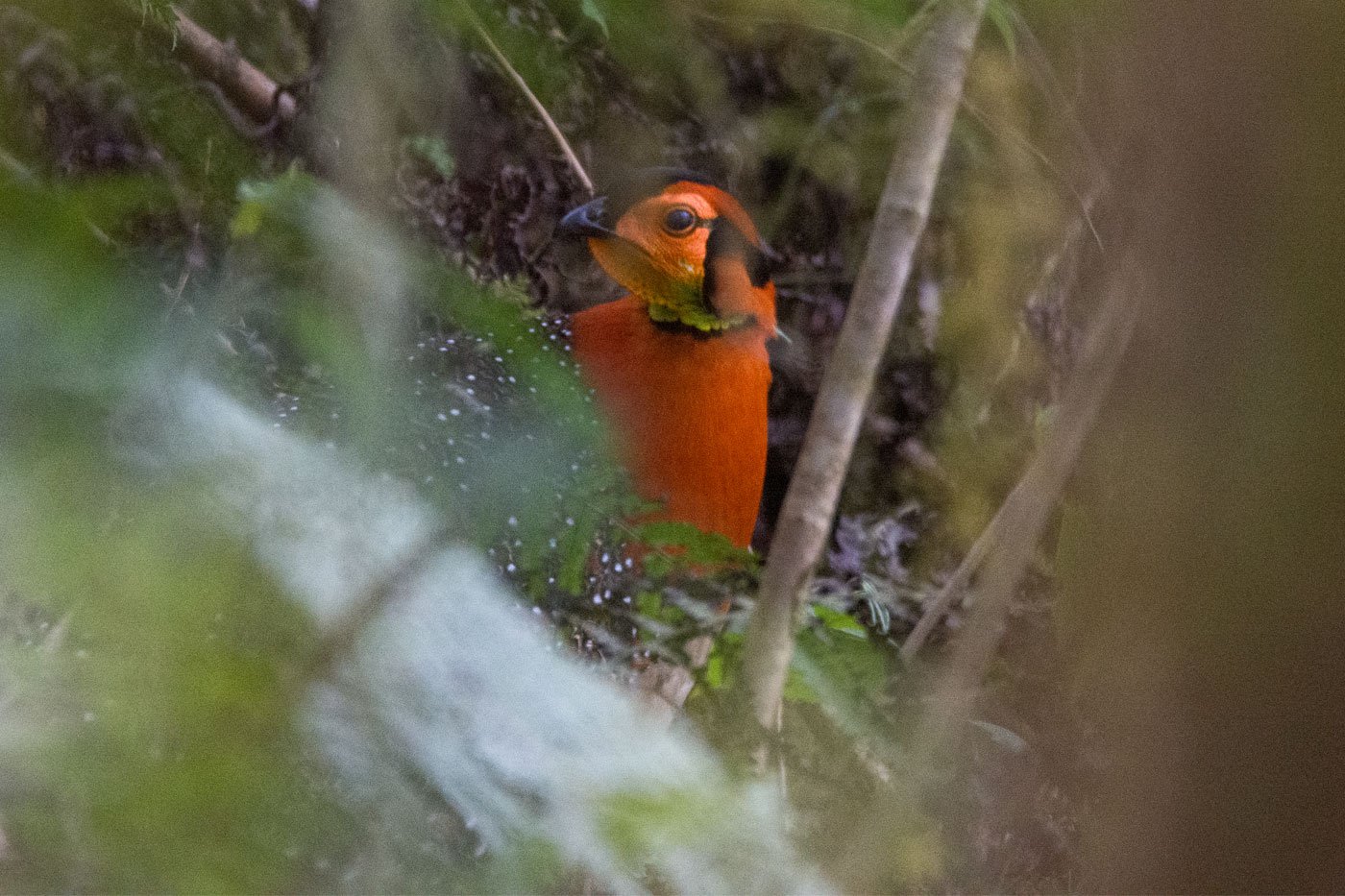
Some of the rarest birds call these cloud forests their home, like the elusive Bugun Liocichla (left) and the large pheasant-like Blyth's Tragopan (right)
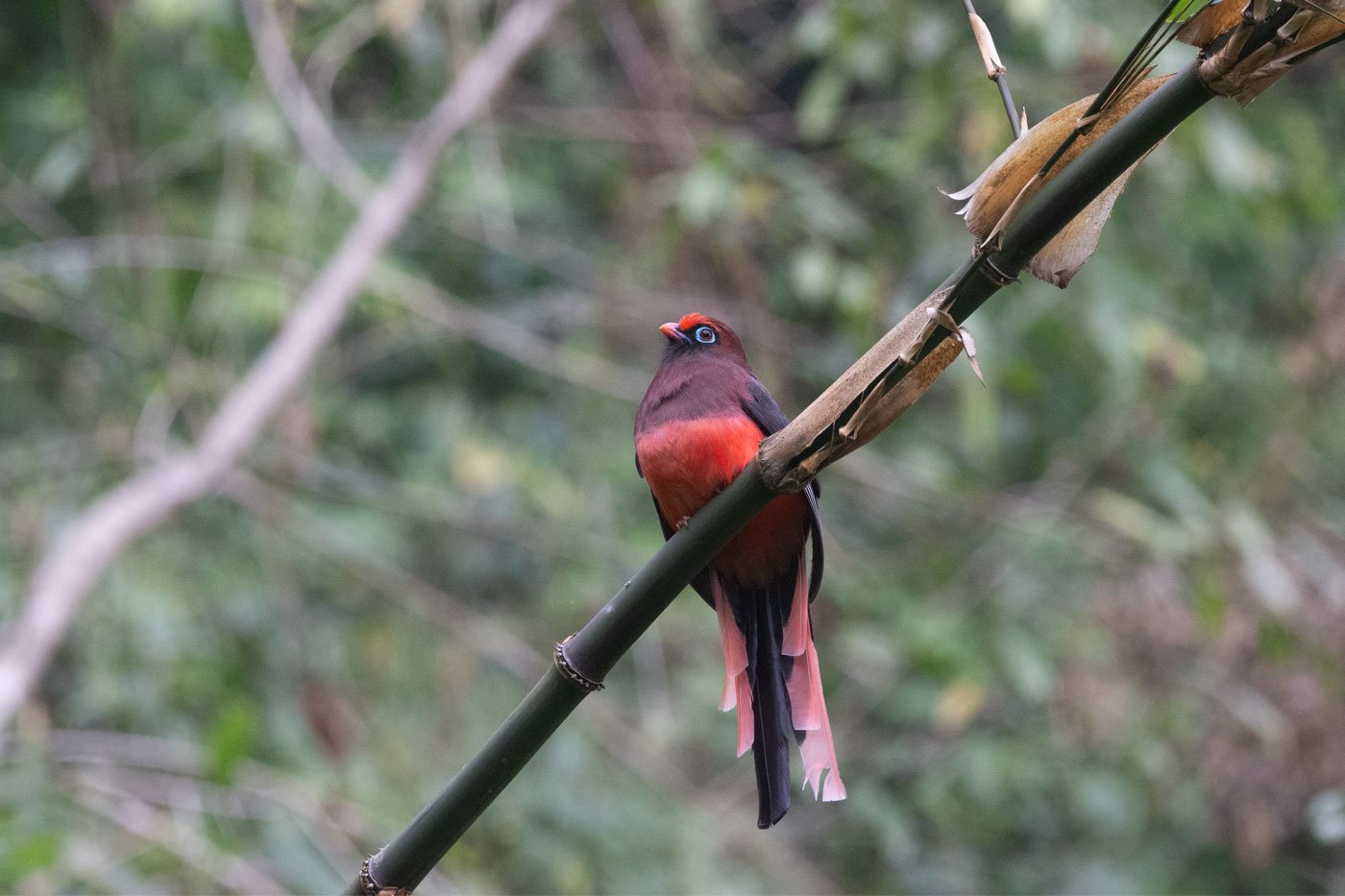
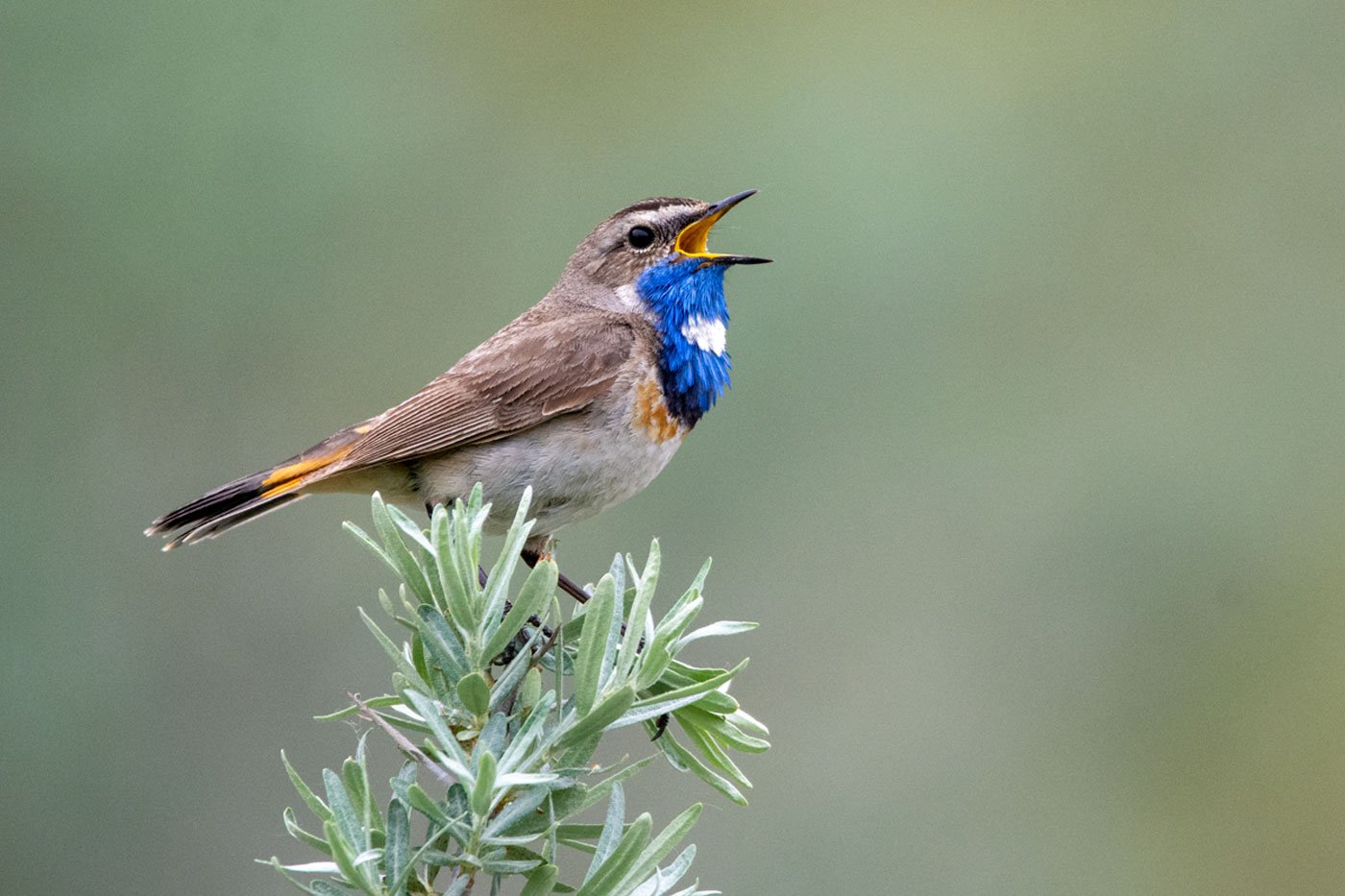
The scarlet-bellied Ward's trogon (left) and a Bluethroat (right) photographed by field staff, Micah Rai
The research team works deep in the forest – living in a single-room shelter with no electricity, running water or a proper roof. To maintain their camp at Bongpu Blangsa, every member is assigned tasks ranging from food preparation and cleaning dishes to fetching drums of water from a nearby stream. The locals come from Ramalingam, about two hours away, while Umesh and researchers are from other parts of the country.
It’s Aiti’s turn to cook, and she is stirring a big pot of dal on the woodfire. “I am happy that my work helps people understand these animals better.” She has been working here for two years now.
The team plays a little game every night, placing bets on birds they will capture based on those they have caught over the years. Everyone participates, their headlamps bobbing up and down as the rain hammers the tarp covering the roof.
"What bird will get caught first in the nets tomorrow morning?” Aiti asks around.
“I think it will be a Golden-breasted fulvetta," she says, confidently.
Micah shoots out, "White-spectacled warbler." Dambar dismisses him with a firm “no.” "Yellow-throated fulvetta," he says.
Micah and Dambar are more experienced as they were the first to be recruited by Umesh, joining the camp at Bongpu in their early twenties. Both of them studied in the local government school at Ramalingam. While Dambar studied till Class 11, Micah dropped out after Class 5. “I just didn’t care enough about studying,” he says regretfully.
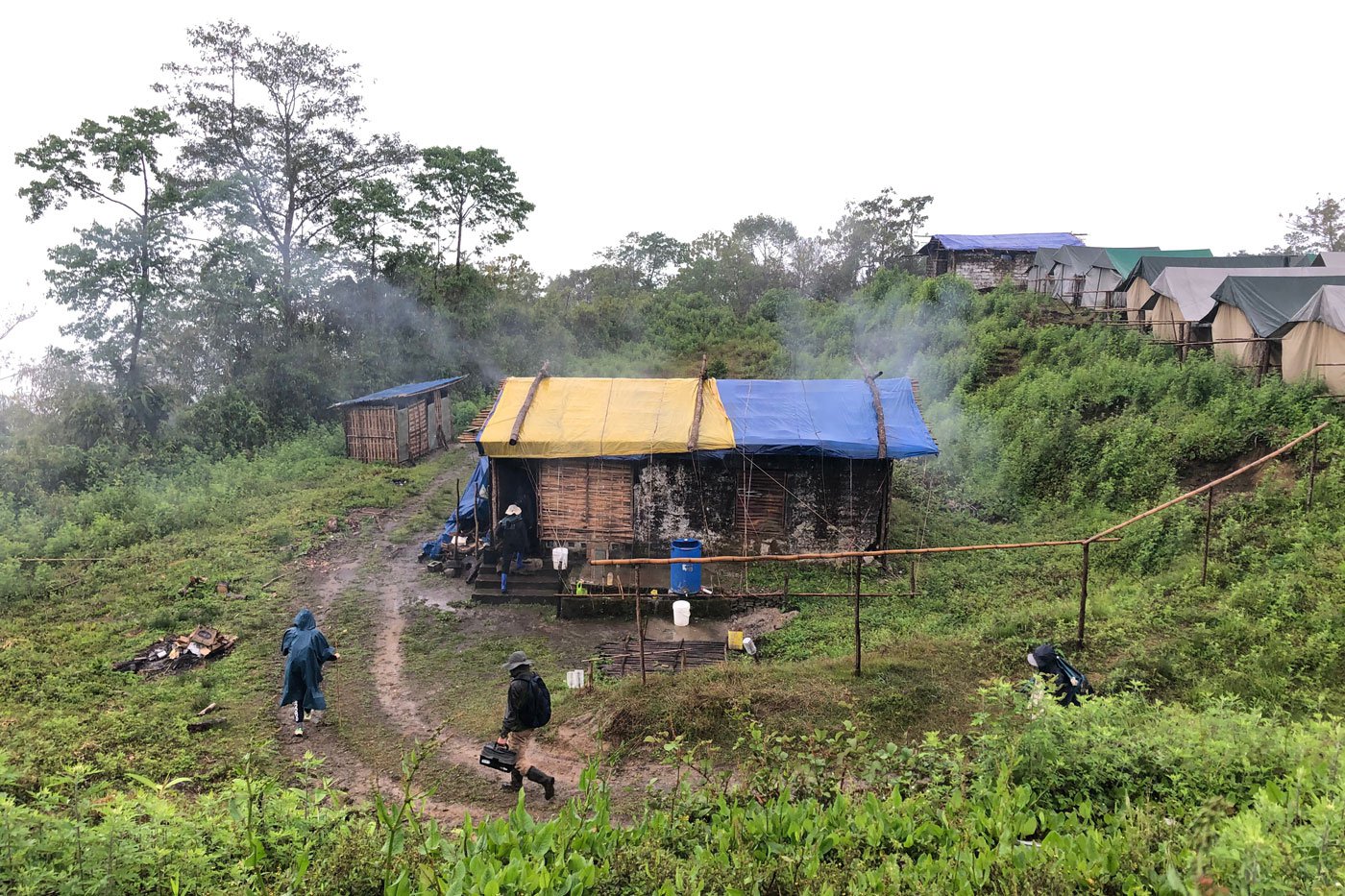

The team on their way back (left) from field work. In the camp in Bongpu Blangsa, Umesh, Dorjee Bachung, Micah and Dambar having their evening tea (right)
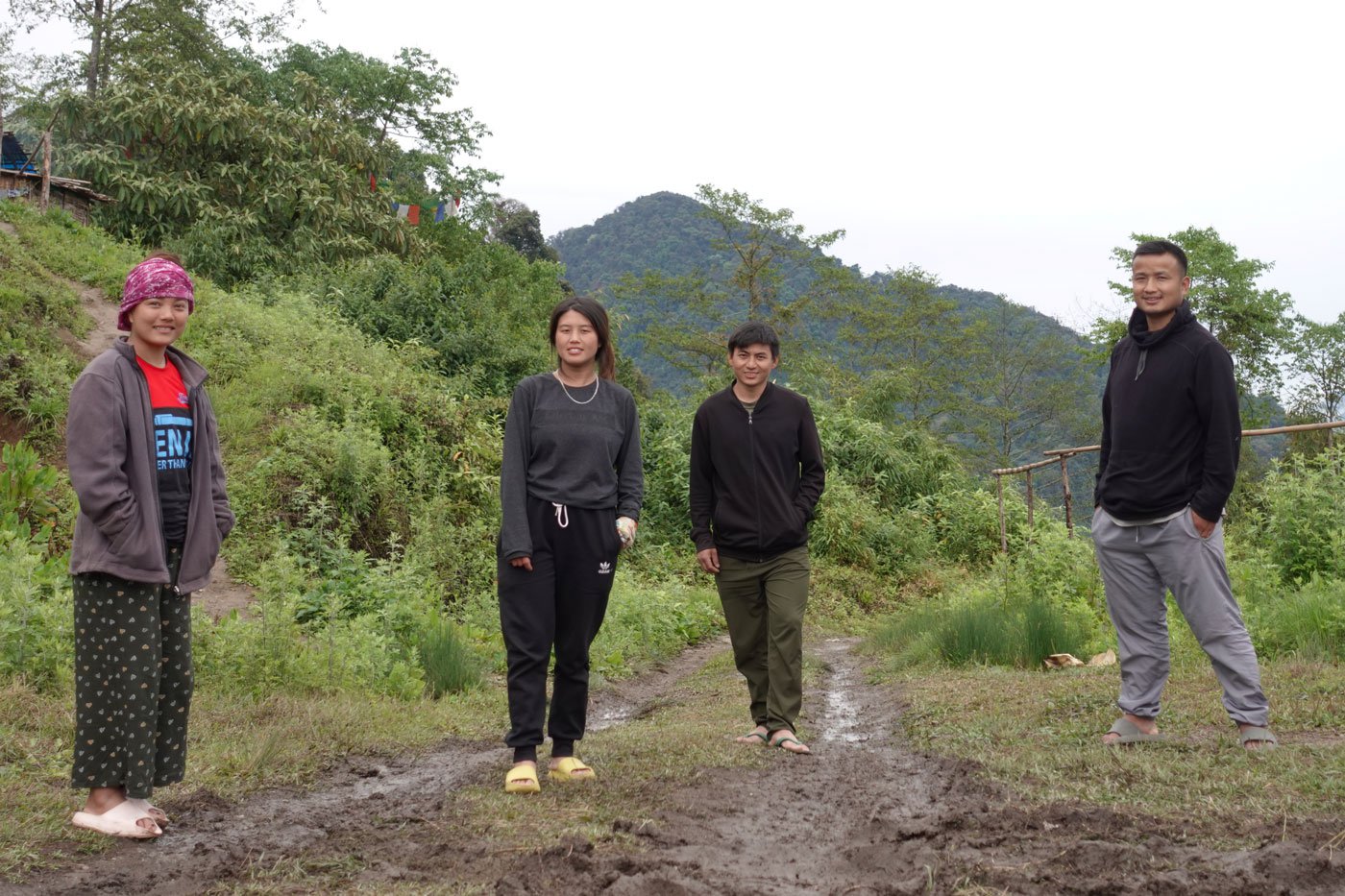
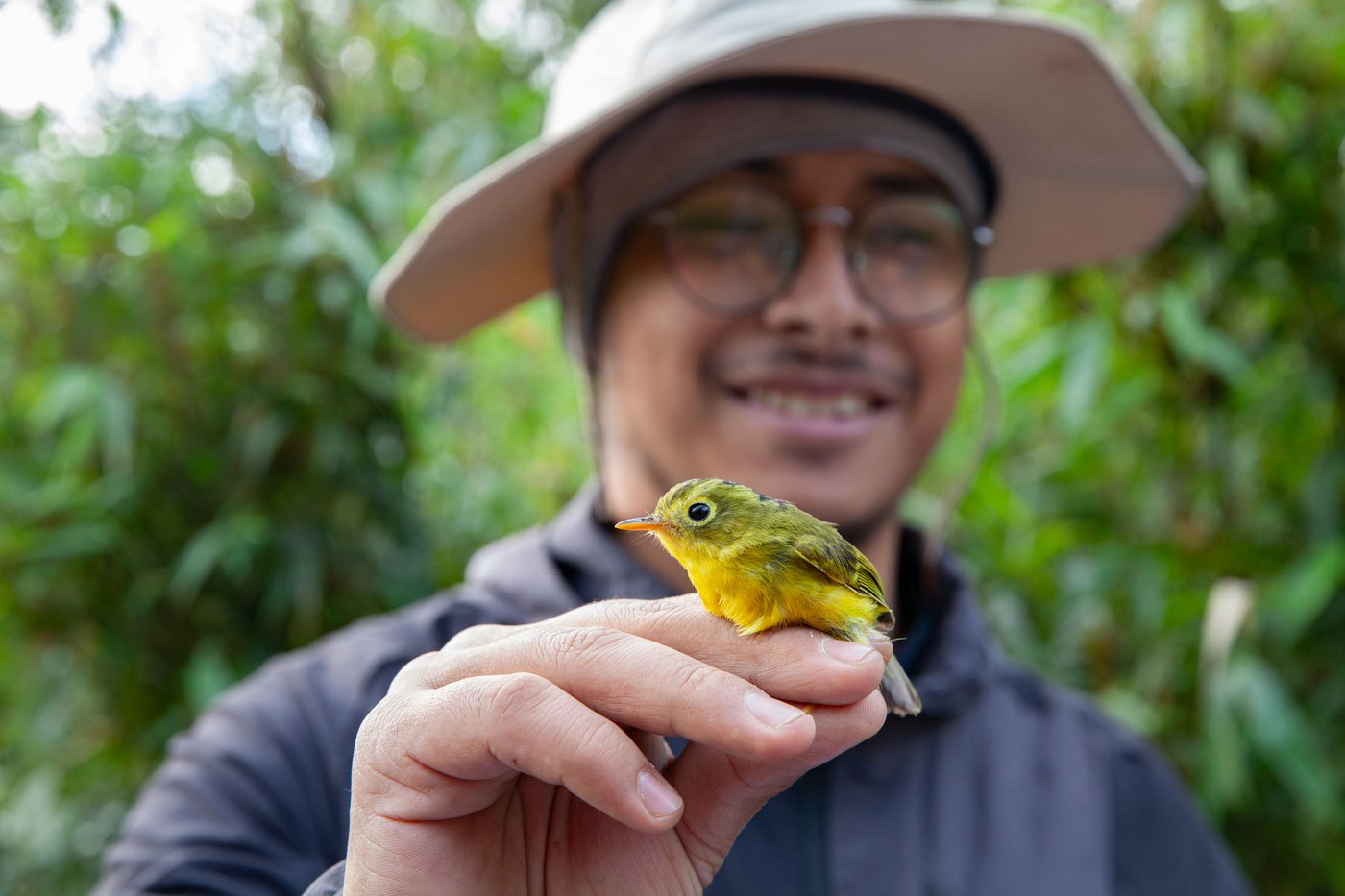
Left: From left to right, Dema, Aiti, Dambar and Micah outside their camp in Bongpu Blangsa. Right: Kaling Dangen holding a Whistler’s Warbler
They are off to bed soon as capturing birds and recording essential data is best done in the morning. "We can wake up as early as 3:30 a.m. depending on how far sampling plots are," says Kaling Dangen. A PhD scholar at the IISc, the 27-year-old is studying stress physiology in birds. He will soon be off with the team to their sampling plots in the soft dawn light.
*****
Despite the elevation and remoteness of this part of the eastern Himalayas, cloud forests here are under pressure from habitat degradation, in particular, logging. The Supreme Court banned logging three decades ago, but the damage to the ecological balance, say scientists, has been done.
"Logged forests complicate the effects of climate change because the sun is streaming in. When you log forests, you change the playground," says researcher Kaling. Logged forests can be up to 6 degrees Celsius hotter than primary forests.
“Because it's hot, the bird spends more time in the shade and has less time to feed; therefore, the body condition, survival, and life span come down. Or it could be a combination of that and the fact that the food it prefers is less abundant in logged forests,” says Kaling. He records data such as weight and wingspan, and studies blood samples and faecal matter to understand the stress birds experience due to climate change.
"White-tailed Robins eat caterpillars and what are called ‘true bugs’, hemipterans. These decline drastically in this kind of [logged] forests,” says Umesh. He says the fall in numbers of White-tailed Robins can be matched with the after effects of logging. “It could be direct physiological stress for the bird because it's hot."
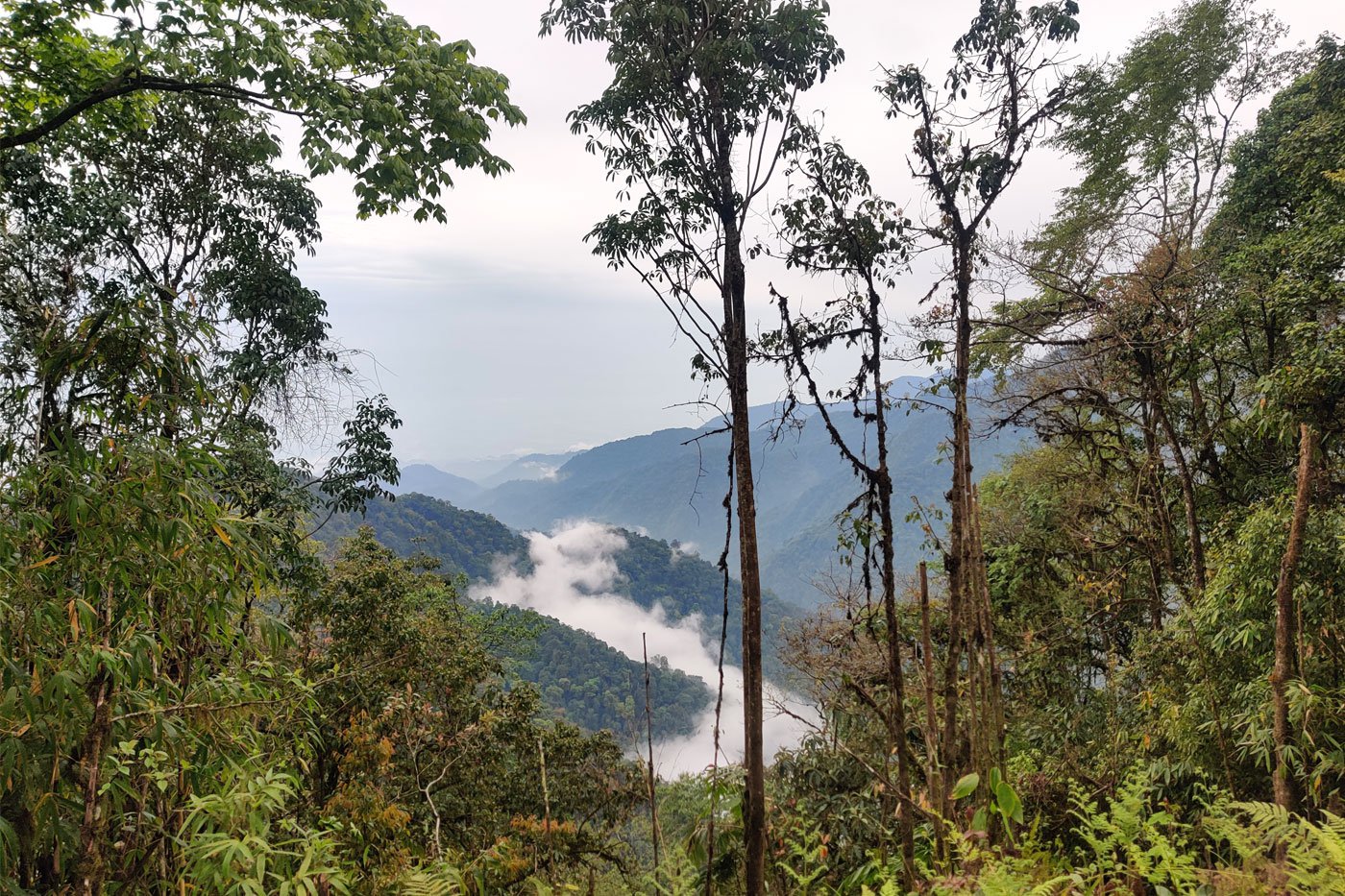
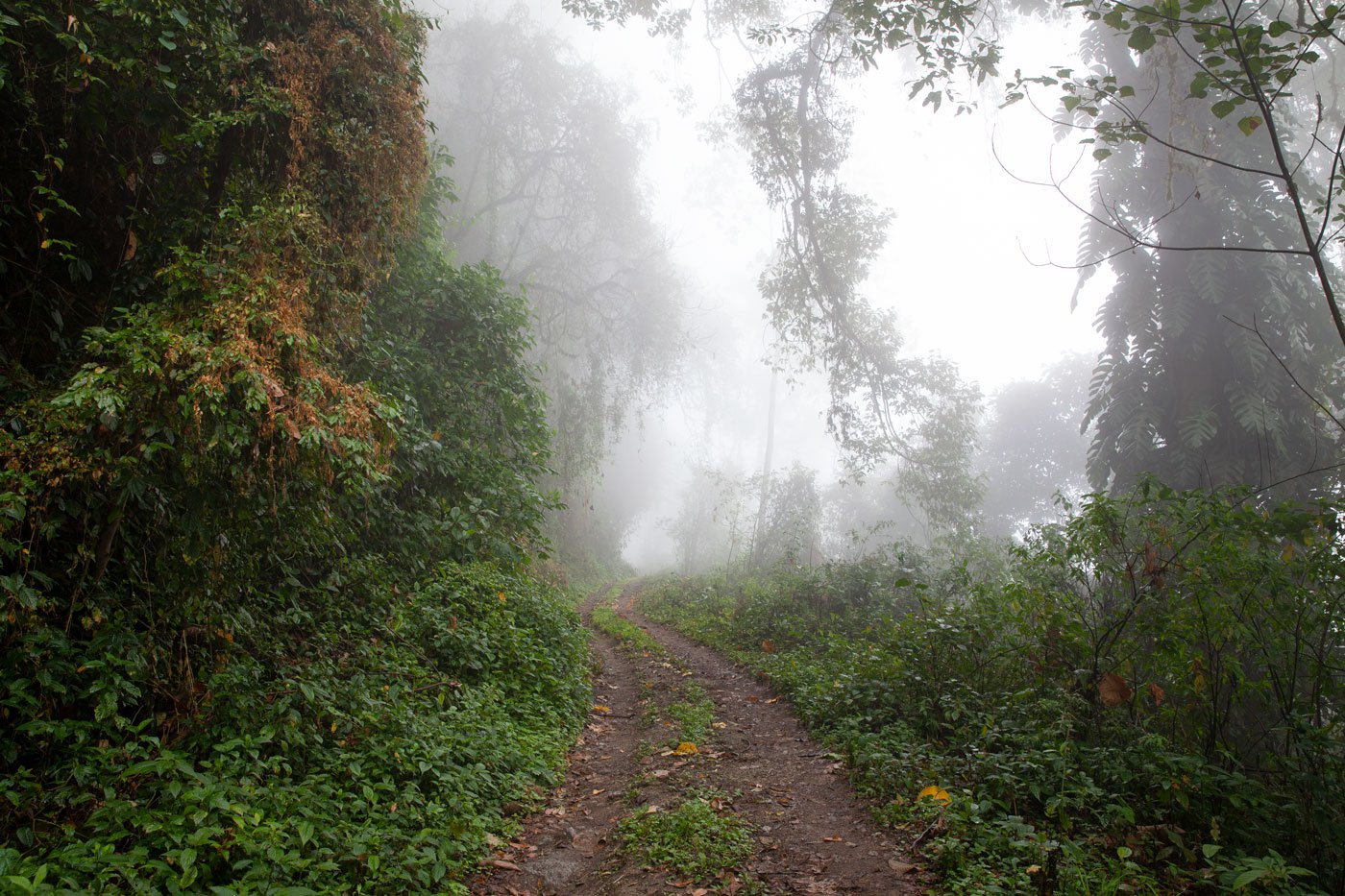
Despite the elevation and remoteness of this part of the eastern Himalayas, cloud forests here in West Kameng are under pressure from habitat degradation, in particular, logging
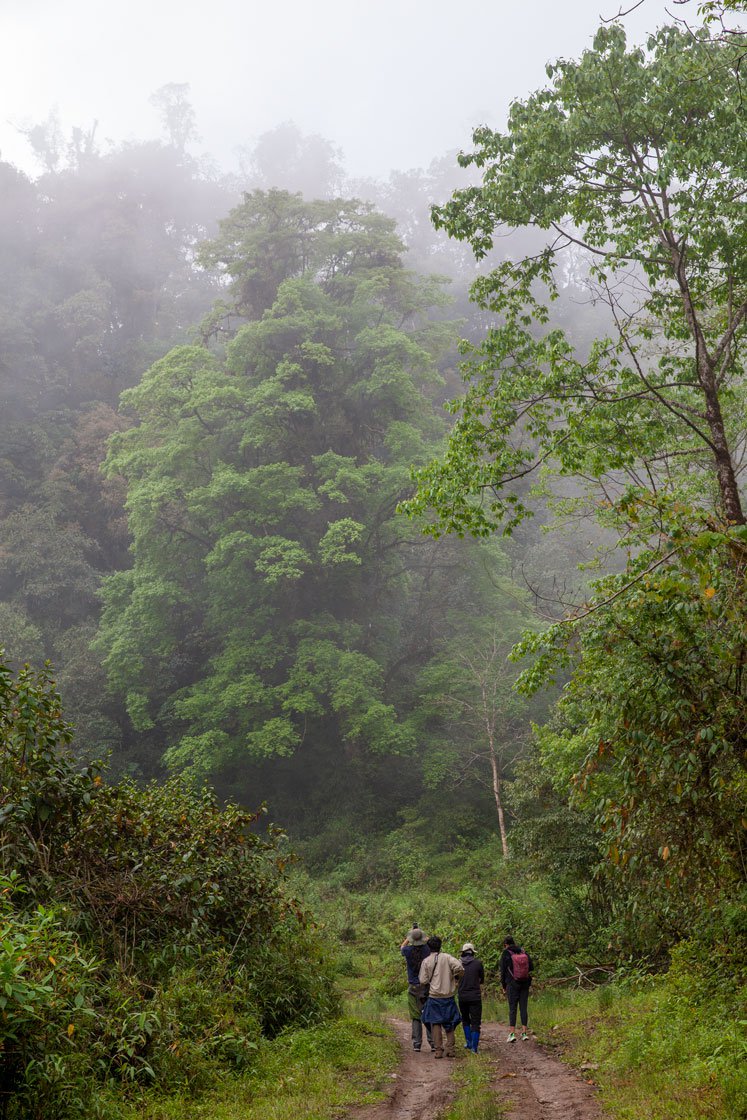
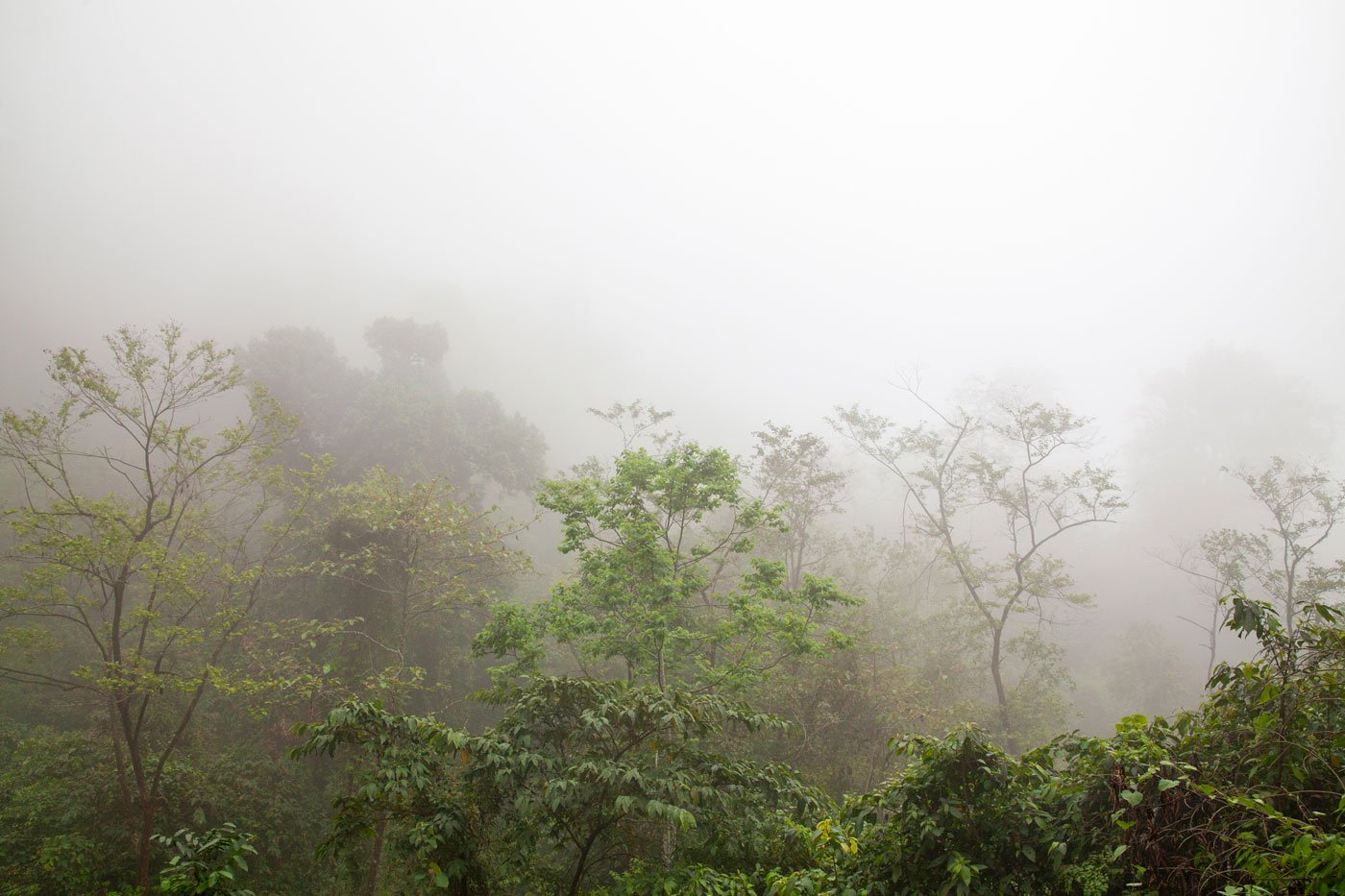
Eaglenest Wildlife Sanctuary covers 218 square kilometres in Arunachal Pradesh’s West Kameng district
Plants in the Himalayas have started moving upslope too, as a response to rising temperatures. Birds are also believed to track these vegetational shifts. "In order to survive, species historically found at 1,000-2,000 mts are now at 1,200-2,200 mts," says Umesh. Birds moving to higher elevations have been documented in other tropical regions such as in Papua New Guinea and the Andes.
Scientists worry that as species move up, there is a danger that they will reach the summits of these mountains, run out of space, wink out and go locally extinct because there is just no more space to move up to.
Eaglenest has tropical evergreen forests in the lower elevations, temperate broad-leaved forests in the mid-altitudes, and conifers and rhododendrons at the highest peaks. And through all this, “What we need now is climate connectivity. Species should be able to move from one location to another,” says Umesh, who is also a trained medical doctor. His love for birds made him switch professions.
“If you have agriculture or urbanisation in the middle of the mountains, that won’t happen,” he says. ”We need corridors that span a large elevational range to protect these species,” he adds.
*****
Local field staff like Micah, Dambar, Aiti and Dema are critical to the study – they are gathering important data and are cited as co-authors in several studies.
Field staff are assigned nets, and through a technique called mist-netting, they capture birds. It involves setting up fine nets between poles in areas of thick vegetation that are difficult for the birds to see. As the birds fly into the nets, they get trapped.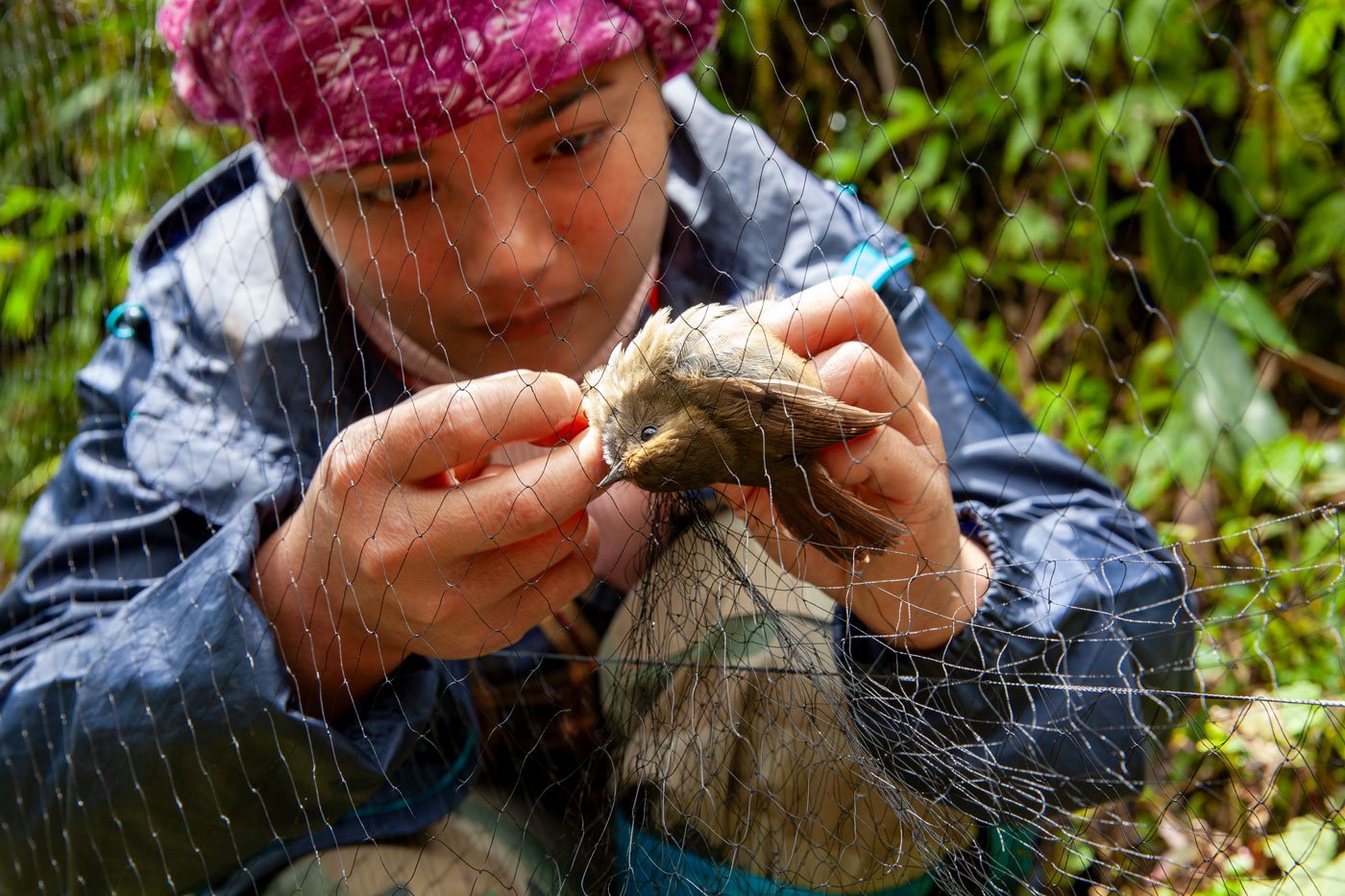
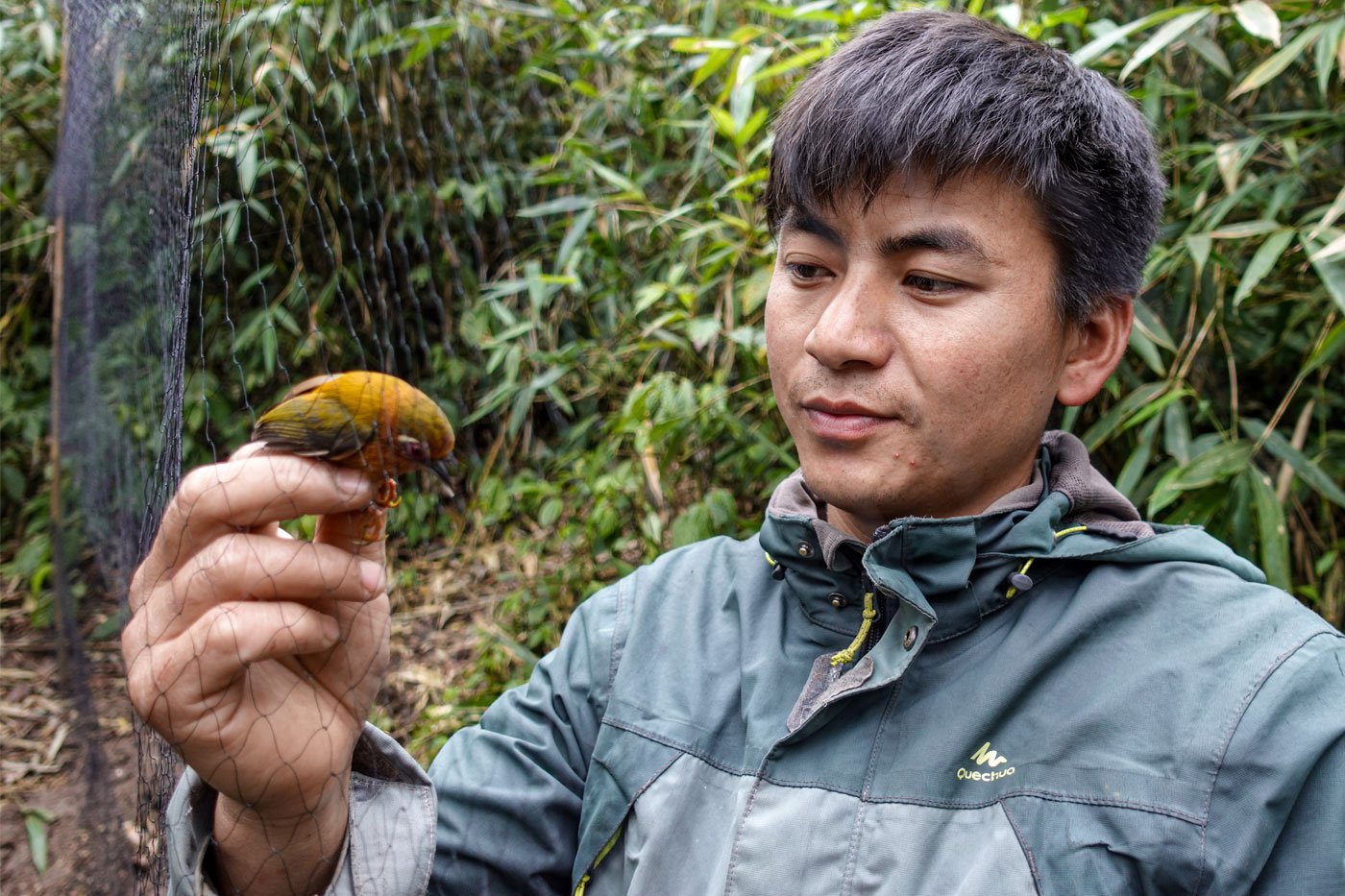
Left: Dema gently untangling a White-gorgeted Flycatcher from the mist-nets. These are fine nets set up in areas of dense foliage. Birds cannot see them and hence, fly into them, getting caught.Right: Dambar holding a White-browed Piculet that he delicately released from the mist-net
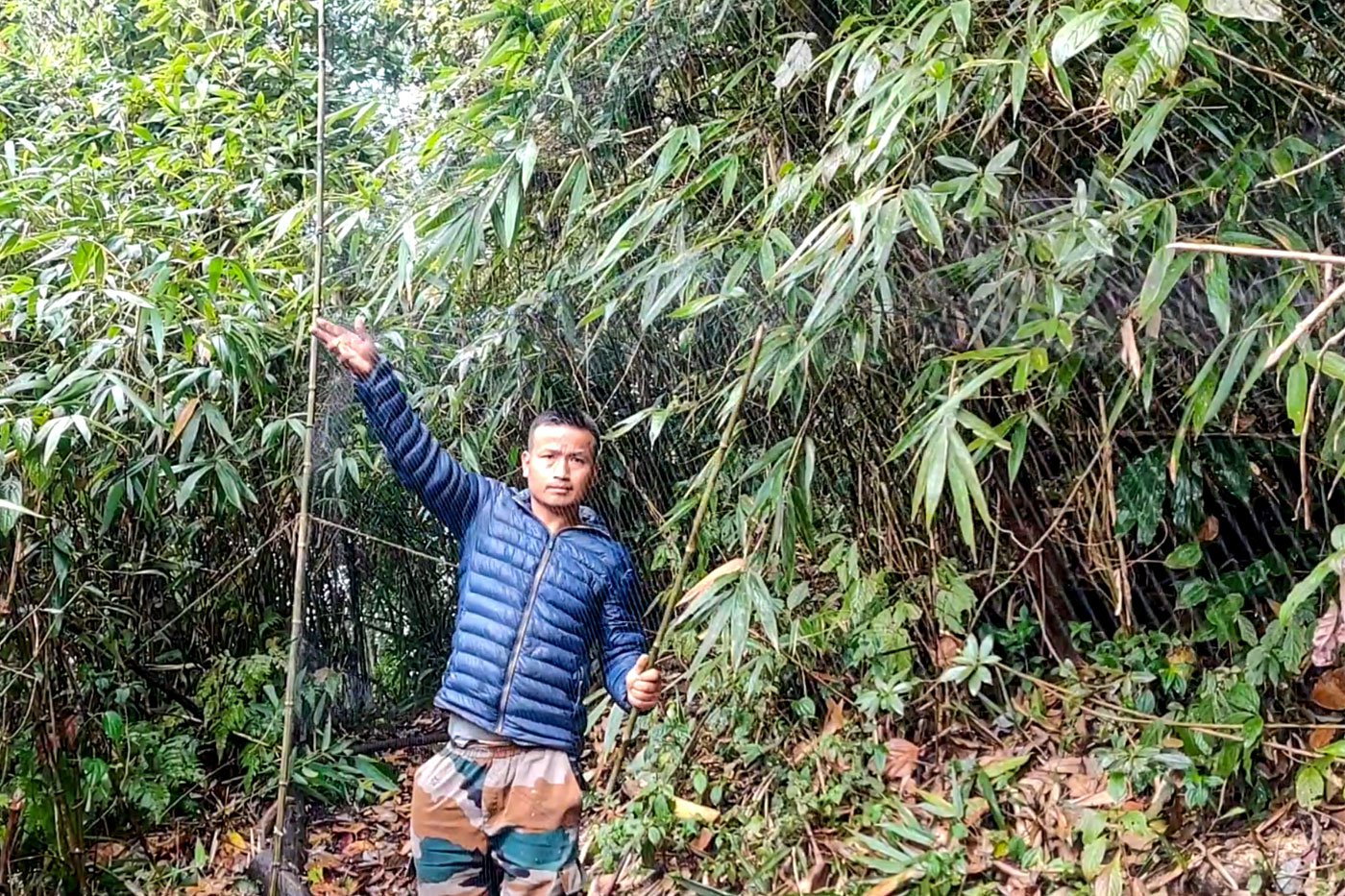
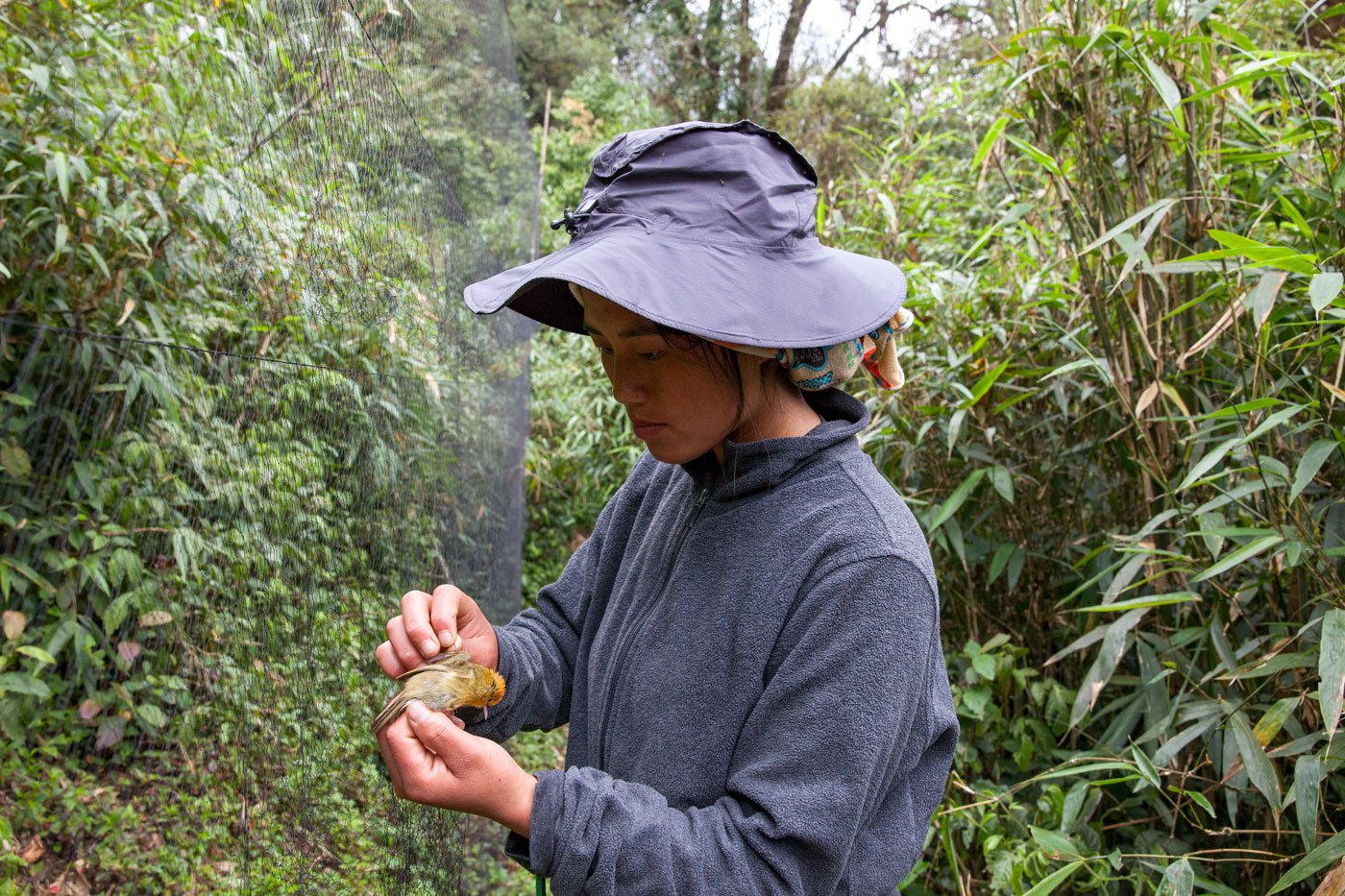
Left: Micah adjusting and checking the nets. Right: Aiti gently releasing a Rufous-capped Babbler from the nets
"We are all assigned between 8-10 nets each," says Dambar, 28, as he seems to almost glide down a slushy slope on the way to one of his nets. Once he reaches, he quickly and gently detaches the little creatures that are stuck in the nets and places them into green cotton cloth bags.
Birds are never held in the net for more than 15 minutes. If there is even the slightest chance of rain, team members scatter to the plots and release the creatures immediately to minimise their stress.
A ringer's grip – a gentle embrace around the bird's thorax – releases the bird from the bag. One has to be very careful for even the slightest pressure could endanger the tiny creature’s life. Birds are then weighed, measured and ringed.
"I don't take this work for granted," says Dema. "I love working with birds. People come here from all over the world and, at best, can only see them from a distance with binoculars. I get to hold them."
Aiti, who stopped school after Class 10, says, "If I hadn’t joined the team in 2021 to do this work, I would be working on rented farmland with my family." Young women like Dema and Aiti are inspired by Micah’s work. Their engagement with forest conservation through birds is also challenging the tradition of hunting.
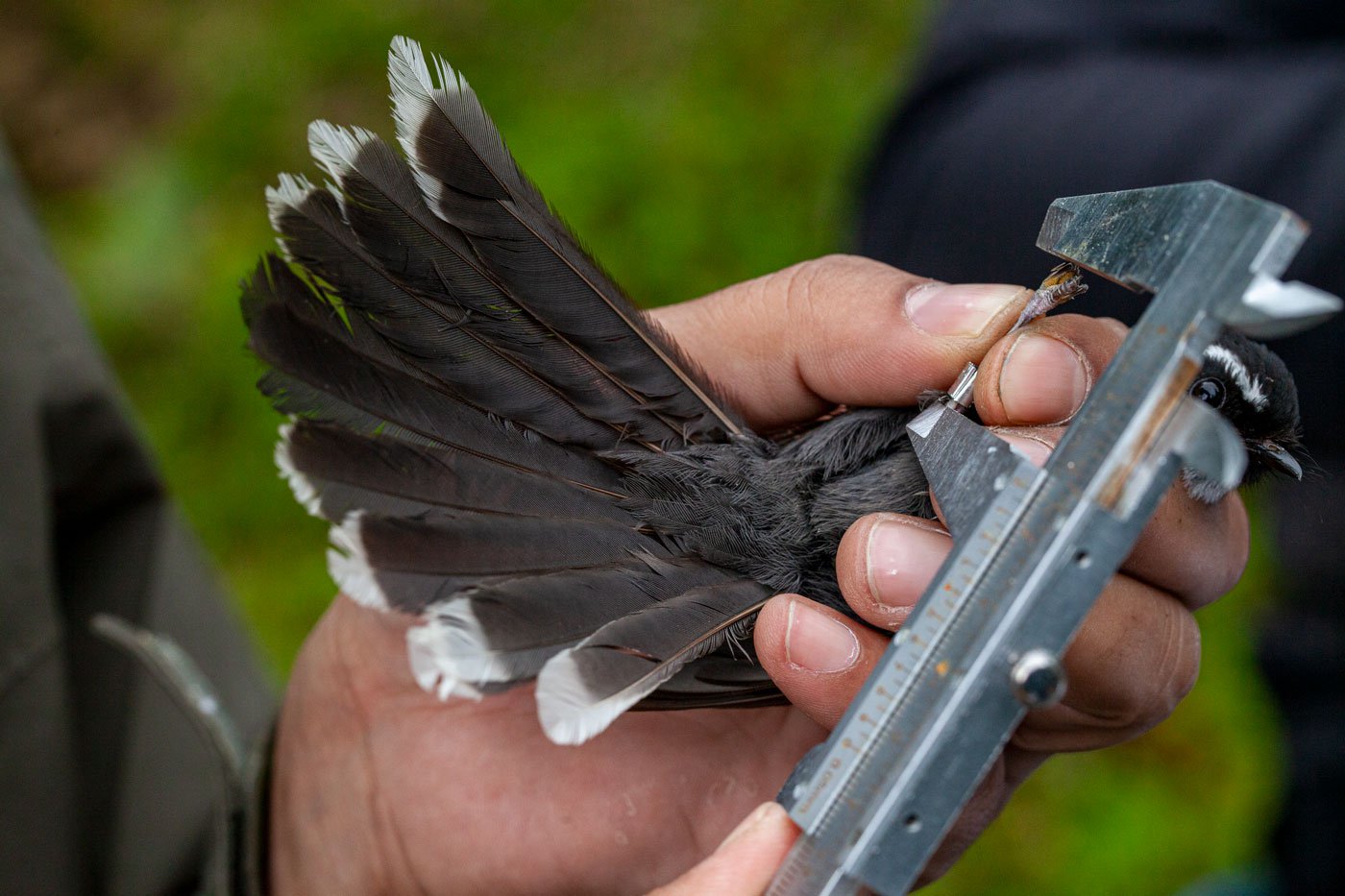
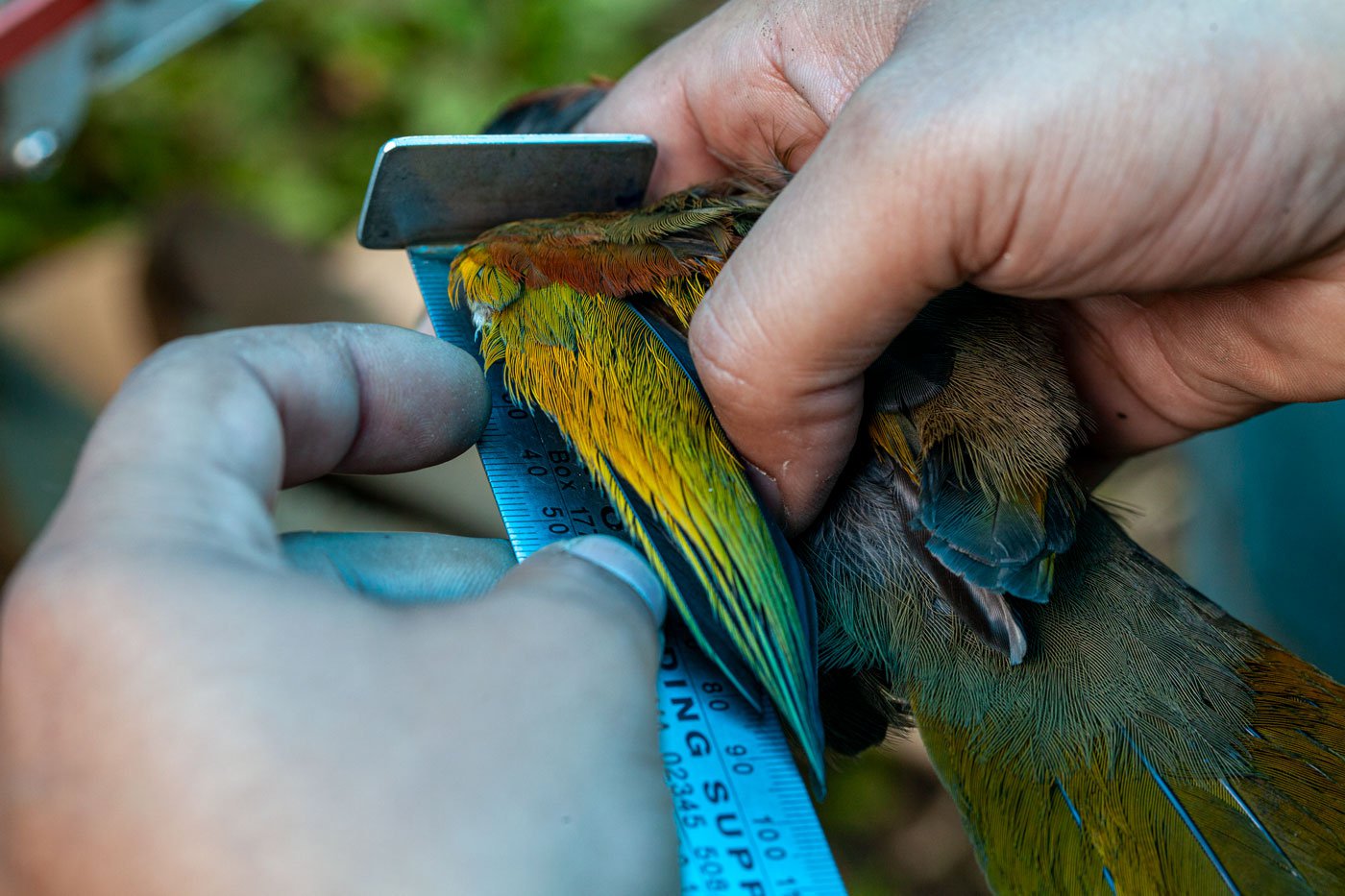
Umesh measuring the tarsus of a White-throated-fantail (left) and the wing of a Chestnut-crowned laughingthrush (right)


Micah holding up a photo of a Rufous-necked Hornbill he shot on his camera. Right: Dema says she doesn’t take this work for granted. 'People come here from all over the world and, at best, can only see them from a distance with binoculars. I get to hold them'
Their engagement with forest conservation through birds is also challenging the tradition of hunting. “Boys would aim their catapults at birds and try to bring them down. They would go into the forests after school and try to do this to pass the time." However, after Micah was hired by Umesh to document these birds, he was able to show children in Ramalingam pictures of the forests and all its wildlife. "My young cousins and friends have started to look at hunting and conservation differently,” he says.
Micah, who is also referred to as the Human GPS by his colleagues due to his seamless ability to navigate Eaglenest, says, "When I was younger, I always wanted to live in a city. The urge was like a birder who wants to see a new species of bird. But after travelling to other parts of India, I just wanted to return to Arunachal Pradesh's jungles."
On reaching one of the nets that overlooks valleys and lush green montane forests, he says "No matter how often I come back here, I am always in awe of the jungle."
Part 2 of this story coming soon: on how the local community is working to mitigate the change in climate
